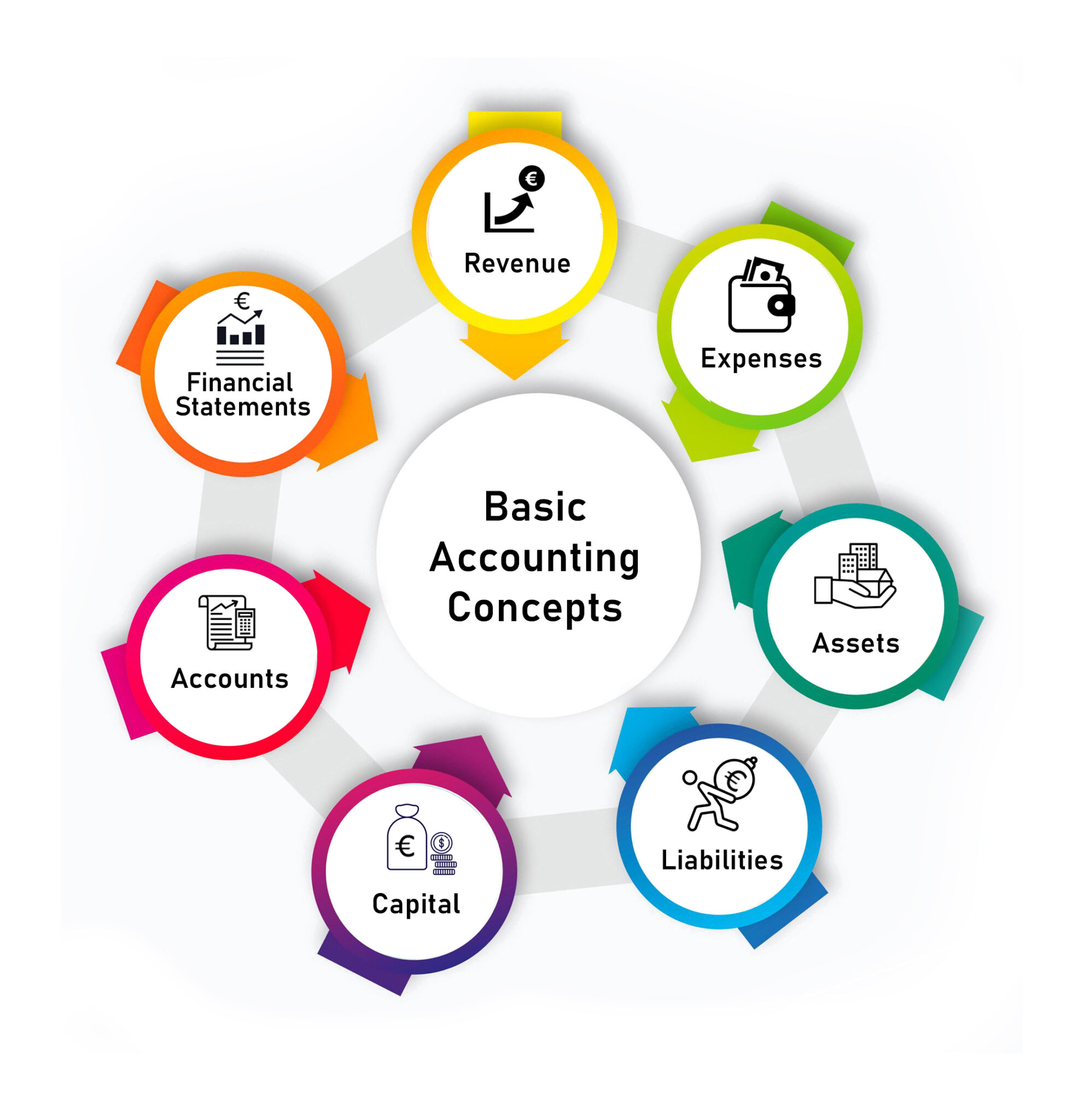Accounting Concepts
Concepts To Improve Your Financial Skills
Accounting Concepts To Improve Your Financial Skills

7 basic accounting concepts
There are many concepts professionals in accounting use to help them provide the best services to their clients, whether professionals or businesses. Some of the most common concepts include:
1. Revenue
For a business, the total amount of money the company receives for selling services and products is its revenue. This means it’s a company’s gross income before deducting any expenses. You can do this by adding all of a company’s earnings, equity increases and interest it gains over the reporting period. A company may deduct its tax liabilities or various expenses from this revenue to determine its profit.
2. Expenses
Expenses are the costs a business incurs to generate revenue. This can include supplies and materials, rent, advertising, employee salaries, repairs and taxes. For example, a restaurant manager may purchase ingredients regularly from a supplier to operate the business. To earn an income, a business aims to have its expenses be less than its revenue.
3. Assets
Assets are resources a business owns that bring it economic benefits. A company can calculate its assets by adding its liabilities to its equity. There are current and non-current assets, which are:
- Current: Resources the business will use within a year, such as cash, checks, receivables, inventories for sale and prepaid expenses.
- Non-current, or fixed: Long-term items that can provide benefits to a company for more than a year, such as stocks and bonds, land, buildings, equipment and trademarks.
4. Liabilities
Liabilities are economic obligations or what a business owes to other organizations, such as lenders and creditors. Like assets, liabilities can also be current or non-current. The differences between these are:
- Current: These are payments that are due within the year and include accounts payable, short-term loans, installments of a long-term loan and tax obligations.
- Non-current liabilities: These payments aren’t due within a year and include long-term bonds and mortgages and deferred tax obligations, which become due in the future.
5. Capital
Capital can be anything that provides value or benefits for a business owner, including assets, machinery, property, inventory and patents. Although cash can be a type of capital, capital usually refers to investments that generate wealth for a business. Here are some types of capital:
- Working: You can calculate working capital by subtracting current liabilities from current assets. Working capital includes liquid capital or cash assets a company uses for daily operations and short-term payments, such as covering debts and accounts payable due within the year.
- Equity: Equity is an owner’s stake or shares in a business or any asset they own, meaning this is money shareholders invest in the company. If a business liquidates its assets or sells them for cash and to pay off liabilities or debts, the value that shareholder gets is their equity.
- Debt: Businesses can get debt capital through borrowing loans and bonds from banks and private or government organizations. Because it’s a sizable amount of money at one time, debt capital can enable a business to invest in its future and expand.
6. Accounts
An account is a type of transaction, such as cash or sales. Businesses record accounts in a general ledger, which is an accounting book that stores and organizes transactions. Accounts receivable include the money customers owe a company for goods and services. Accounts payable are the money a business owes to creditors and suppliers for goods and services.
7. Financial statements
Financial statements are documents that show the transactions of a business or person. Here are some different financial statements and their definitions:
- Income statement: Also called a profit-and-loss statement, this is a document that details a company’s financial performance by reporting revenues, costs and expenses during a period.
- Balance sheet: This financial document reports a company’s assets, liabilities and equity.
- Statement of cash flows: These statements report the amount of cash a business earned and the amount of cash it spent during a period.


